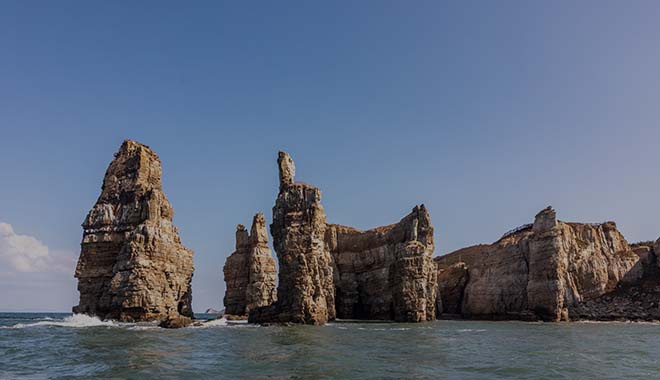The Geology of Baengnyeong,
Daecheong, and Socheongdo

Baengnyeongdo Island, Daecheongdo Island, and
Socheongdo Island consist of sediments deposited
about 950 million years ago, diabase intruded 940 million
and 886 million
years ago, and basalt erupted about
6 million years ago. In Republic of Korea, Neoproterozoic formations
are mainly along the west coast and correspond primarily
to the South China Craton.
In contrast, the sedimentary
rocks of the Baengnyeong and Daecheong areas relate
to the North China Craton, and their sedimentary
structure was preserved very well,
leading to figuring
out the spatial distribution of the North China Craton
and Nanglim Massif over a billion years ago during the
Neoproterozoic era.
Socheongdo Island consist of sediments deposited
about 950 million years ago, diabase intruded 940 million
and 886 million
years ago, and basalt erupted about
6 million years ago. In Republic of Korea, Neoproterozoic formations
are mainly along the west coast and correspond primarily
to the South China Craton.
In contrast, the sedimentary
rocks of the Baengnyeong and Daecheong areas relate
to the North China Craton, and their sedimentary
structure was preserved very well,
leading to figuring
out the spatial distribution of the North China Craton
and Nanglim Massif over a billion years ago during the
Neoproterozoic era.
Identifying the Northeast Asian
Large Igneous Province
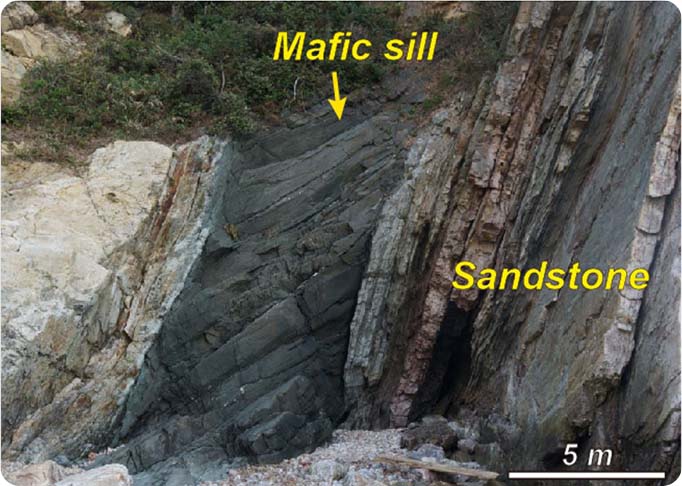
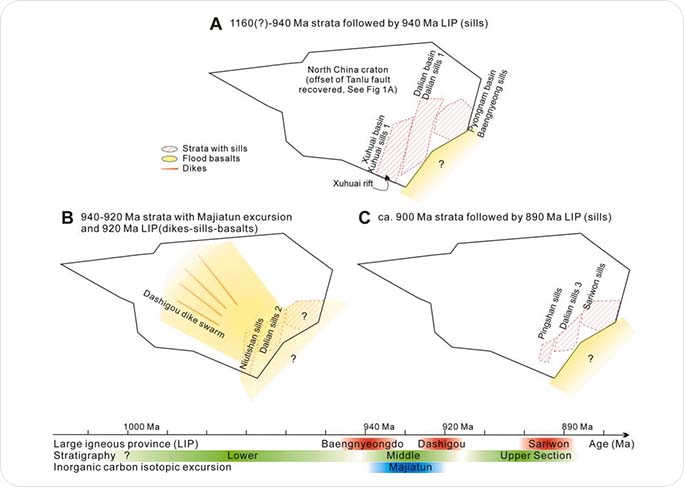
The 940-million-year-old diabase intrusion in
Baengnyeongdo Island and Daecheongdo Island,
along with the 886-million-year-old diabase intrusion in
Socheongdo Island,
provide constraints on the timing of
deposition for these islands. Their geochemical signatures
allow us to identify the formation of the Large Igneous
Province in Northeast
Asia over a billion years ago.
Baengnyeongdo Island and Daecheongdo Island,
along with the 886-million-year-old diabase intrusion in
Socheongdo Island,
provide constraints on the timing of
deposition for these islands. Their geochemical signatures
allow us to identify the formation of the Large Igneous
Province in Northeast
Asia over a billion years ago.
Depositional Environments of
Neoproterozoic Northeast Asia
as Revealed by Redbeds
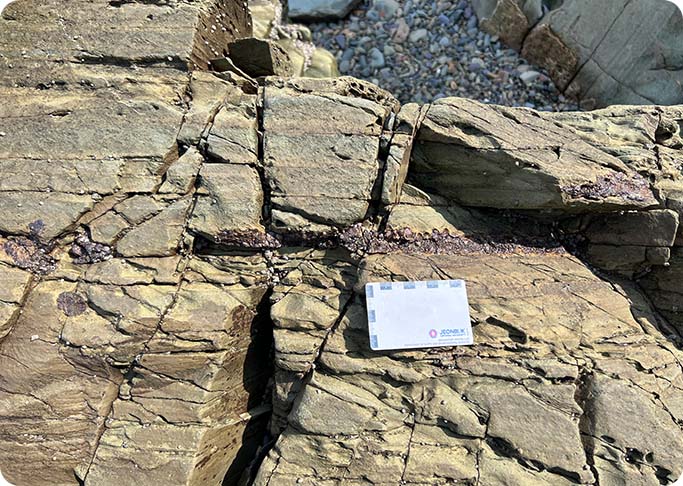
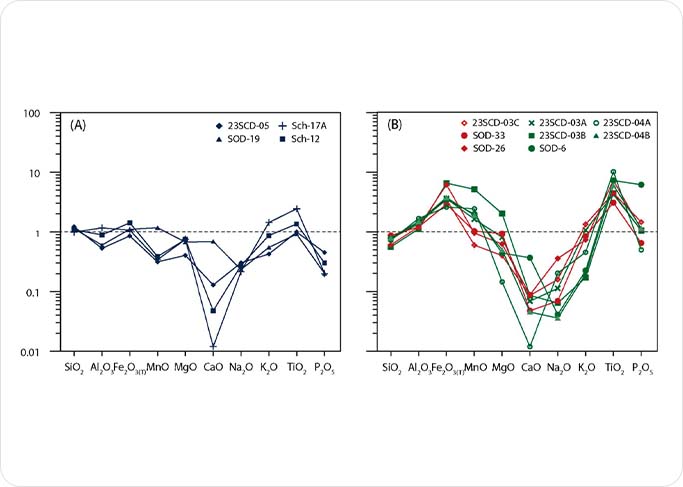
The Socheongdo Island redbeds remain in
connection with the Large Igneous Province (LIP),
which was accompanied by extensive activity and
completely intruded
Northeast Asia during the
depositional period. These are found to occur in the
upper Yedong member of the Socheong Formation,
exhibiting two to nine times higher iron
contents than
the lower part; these show purple to green colorations.
Of these, however, green shale was formed under a
reducing environment rather than an oxidizing
environment, as it would usually be an environmental
indicator. This, therefore, means that the formation
of the LIP, involving the emplacement of mafic
hydrothermal fluids,
greatly impacted the chemical
environment within the hydrosphere and biosphere
surrounding Socheongdo Island at that time.
connection with the Large Igneous Province (LIP),
which was accompanied by extensive activity and
completely intruded
Northeast Asia during the
depositional period. These are found to occur in the
upper Yedong member of the Socheong Formation,
exhibiting two to nine times higher iron
contents than
the lower part; these show purple to green colorations.
Of these, however, green shale was formed under a
reducing environment rather than an oxidizing
environment, as it would usually be an environmental
indicator. This, therefore, means that the formation
of the LIP, involving the emplacement of mafic
hydrothermal fluids,
greatly impacted the chemical
environment within the hydrosphere and biosphere
surrounding Socheongdo Island at that time.
The Oldest Biogenic Reef Fossils
on Republic of Korea Peninsula
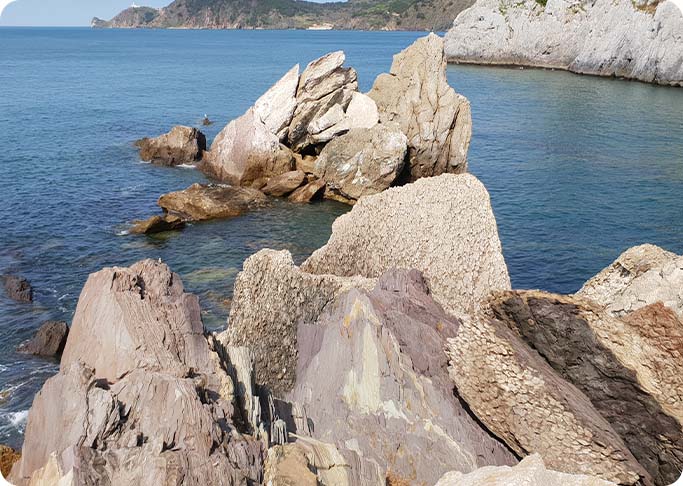

As the oldest fossil to be discovered in Republic of Korea,
this stromatolite from Socheongdo Island, like red beds,
would give a correlation of some other strata within
the whole of
Northeast Asia and, together with
sedimentary structures at Baengnyeong and Daecheong
areas, would offer more details on the environment over
a billion years ago.
this stromatolite from Socheongdo Island, like red beds,
would give a correlation of some other strata within
the whole of
Northeast Asia and, together with
sedimentary structures at Baengnyeong and Daecheong
areas, would offer more details on the environment over
a billion years ago.
Mantle Rocks Release
Earth's Inner Secrets
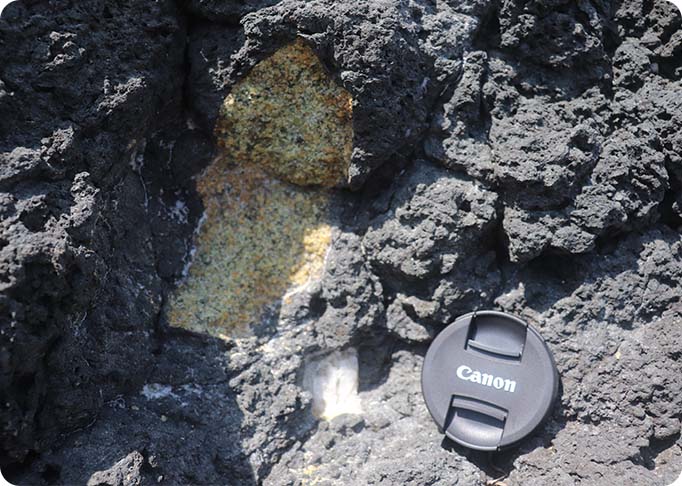
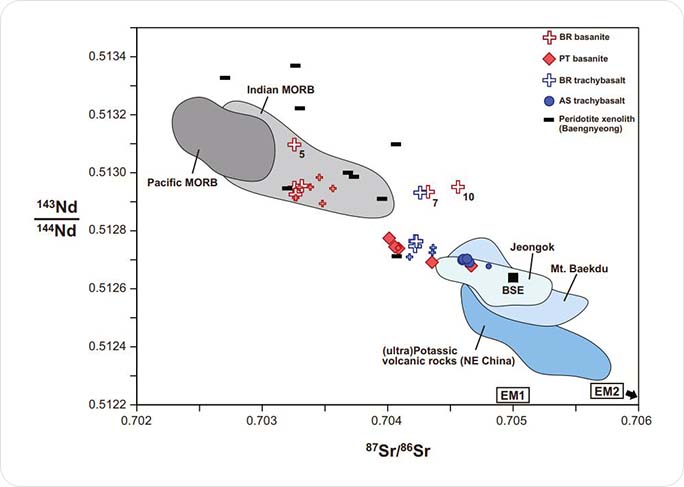
Jinchon-ri basalt distributed to the northeast of
Baengnyeongdo Island was an effusion in a volcanic
eruption about six million years ago in the early
Cenozoic era.
The magma that produced this basalt is
thought to have been situated on the boundary of the
Earth's crust and mantle, with an excellent viscosity so
high it could tear
through the underlying mantle rocks,
permitting eruption onto the surface. The mantle rocks
in the Jinchon-ri basalt are outstandingly huge and
well-preserved, providing
insight into Cenozoic magmatic
activity that would dominate the construction of the Republic of Korea
peninsula and the evolutionary history of the Earth's
crust and mantle.
Baengnyeongdo Island was an effusion in a volcanic
eruption about six million years ago in the early
Cenozoic era.
The magma that produced this basalt is
thought to have been situated on the boundary of the
Earth's crust and mantle, with an excellent viscosity so
high it could tear
through the underlying mantle rocks,
permitting eruption onto the surface. The mantle rocks
in the Jinchon-ri basalt are outstandingly huge and
well-preserved, providing
insight into Cenozoic magmatic
activity that would dominate the construction of the Republic of Korea
peninsula and the evolutionary history of the Earth's
crust and mantle.



 KOR
KOR ENG
ENG

